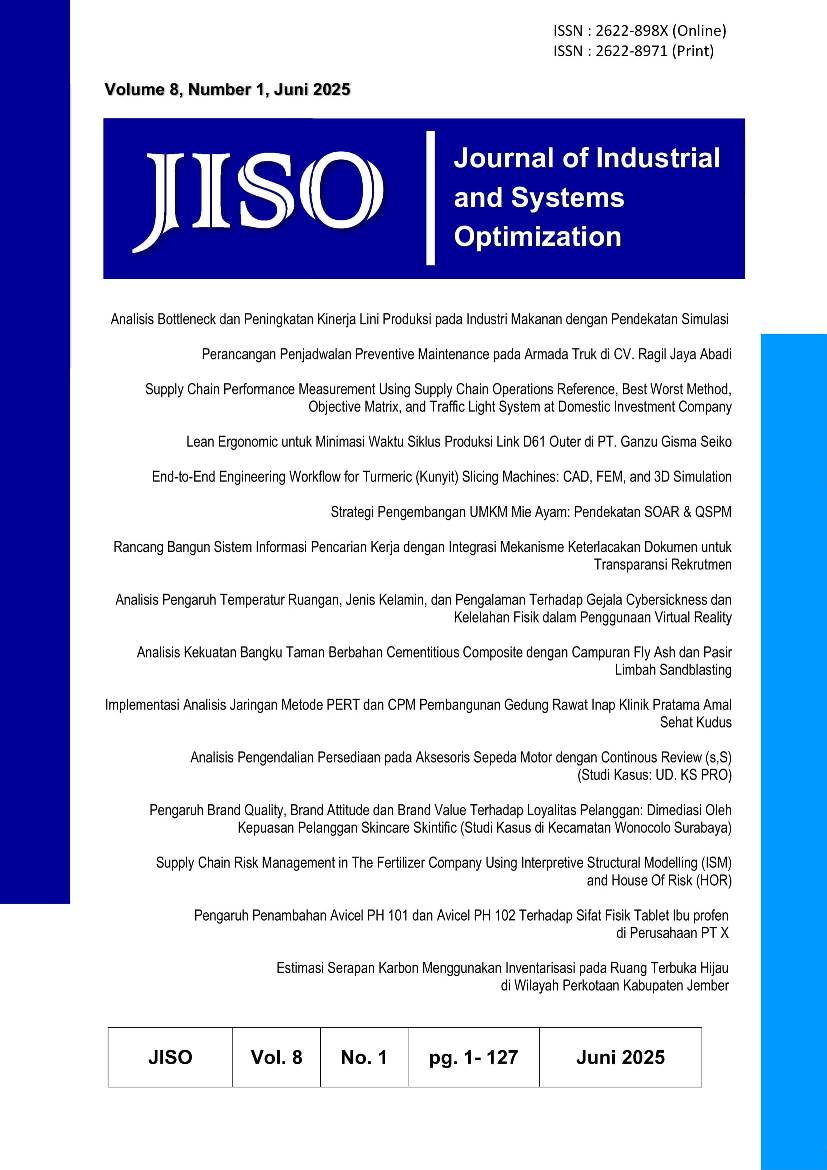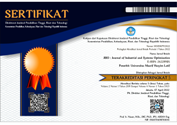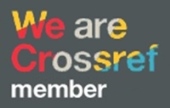ANALISIS PENGENDALIAN PERSEDIAAN PADA AKSESORIS SEPEDA MOTOR DENGAN CONTINOUS REVIEW (s,S)
STUDI KASUS: UD. KS PRO
DOI:
https://doi.org/10.51804/jiso.v8i1.85-95Keywords:
Biaya Persediaan, Continous Review (sS), Manajemen Persediaan, monte carlo simulation, OverstockAbstract
ABSTRAK
Kelebihan persediaan yang terjadi di UD. KS PRO sepanjang tahun 2023 telah menimbulkan kerugian finansial yang signifikan akibat tingginya biaya penyimpanan, yang mencerminkan adanya ketidakefisienan dalam pengelolaan persediaan. Permasalahan ini diidentifikasi sebagai akibat dari belum optimalnya sistem pengendalian persediaan yang diterapkan. Penelitian ini dilakukan untuk mengatasi isu tersebut dengan mengaplikasikan dua metode pengendalian persediaan, yaitu Periodic Review dan Continuous Review. Melalui penerapan simulasi Monte Carlo, permintaan dapat diproyeksikan secara lebih akurat, sehingga parameter kebijakan seperti titik pemesanan ulang, stok maksimum, dan jumlah pemesanan dapat ditentukan secara lebih efisien dan tepat sasaran. Hasil penelitian menunjukkan bahwa metode Continuous Review (s, S) lebih unggul dibandingkan Periodic Review, karena mampu menurunkan total biaya persediaan hingga 78,16% serta memberikan kontrol yang lebih responsif terhadap fluktuasi permintaan dan risiko overstock maupun stockout. Dengan demikian, metode Continuous Review direkomendasikan untuk diterapkan oleh perusahaan yang bergerak di sektor produksi dan distribusi, guna meningkatkan efisiensi operasional dan memperkuat daya saing dalam menghadapi dinamika pasar yang kompetitif.
ABSTRACT
The excess inventory that occurred at UD. KS PRO throughout 2023 has caused significant financial losses due to high storage costs, reflecting inefficiencies in inventory management. This issue was identified as a result of the suboptimal inventory control system being implemented. This research was conducted to address the issue by applying two inventory control methods, namely periodic review and continuous review. Through the application of Monte Carlo simulation, demand can be projected more accurately, allowing policy parameters such as reorder point, maximum stock, and order quantity to be determined more efficiently and precisely. The research results show that the Continuous Review (s, S) method is superior to the Periodic Review method, as it can reduce total inventory costs by up to 78.16% and provide more responsive control over demand fluctuations and the risks of overstock and stockout. Therefore, the continuous review method is recommended for implementation by companies in the production and distribution sectors in order to improve operational efficiency and strengthen competitiveness in facing the dynamics of a competitive market.
References
Al Fatih, M. T. (2020). Pengendalian Persediaan Material Distribusi Utama (MDU) pada PLN Unit Induk Distribusi (UID) Jawa Timur dengan Klasifikasi ABC dan Pendekatan Continuous Review [PhD Thesis, Institut Teknologi Sepuluh Nopember]. https://repository.its.ac.id/79294/1/02411640000146-Undergraduate_Thesis.pdf
Arismawati, P., Ridwan, A. Y., & Santosa, B. (2015). Perencanaan Kebijakan Persediaan Untuk Meminimasi Biaya Total Persedian Dengan Pendekatan Metode Periodic Review (r,s,s) Pada Part Aksesoris. eProceedings of Engineering, 2(2), Article 2. https://openlibrarypublications.telkomuniversity.ac.id/index.php/engineering/article/view/3123
Baron, O., Berman, O., & Perry, D. (2020). CONTINUOUS REVIEW INVENTORY MODELS FOR PERISHABLE ITEMS WITH LEADTIMES. Probability in the Engineering and Informational Sciences, 34(3), 317–342. https://doi.org/10.1017/S0269964817000225
Irawan, I., Subawa, S., Suprayitno, D., Suharyanto, S., Herlina, R. L., Ibrahim, H., Fitriyana, F., Suhardi, A. R., Komala, A. L., & Sabaruddin, L. O. (2024). Buku Ajar Manajemen Rantai Pasok. PT. Sonpedia Publishing Indonesia.
Irawanto, S. E., Saragih, N. I., & Santosa, B. (2023). Usulan Kebijakan Persediaan Produk Tepung Mocaf dengan Menggunakan Metode Continuous Review (s,S) dan Periodic Review (R,s,S) untuk Meminimasi Overstock pada Gudang Produk Jadi di PT RMI. Journal of Production, Enterprise, and Industrial Applications, 1(1), 20–27. https://doi.org/10.25124/jpeia.v1i1.6514
Maitra, S. (2024). Inventory Management Under Stochastic Demand: A Simulation-Optimization Approach (arXiv:2406.19425). arXiv. https://doi.org/10.48550/arXiv.2406.19425
Nurhayati Lestari, 14522257. (2018). PENGENDALIAN PENGADAAN BAHAN BAKAR MENGGUNAKAN MODEL PROBABILISTIK CONTINUOUS REVIEW SYSTEM Studi Kasus di PT. Semen Padang, Sumatera Barat. https://dspace.uii.ac.id/handle/123456789/9796
Sugiharti, E., Mustafid, M., Isnanto, R. R., Warsito, B., & Wibowo, A. (2023). Quasi Monte Carlo for Periodic Review in Inventory Systems. E3S Web of Conferences, 448, 02033. https://doi.org/10.1051/e3sconf/202344802033
Suryadhini, P. P., Setiawan, A. F., & Juliani, W. (2019). Inventory Control Policy for Farm-Out Parts at Cold Section Module CT 7 Engine with Periodic Review (R, s, S) and (R, S) to Minimize Total Inventory Cost. 166–170. https://doi.org/10.2991/icoiese-18.2019.30
Widyadana, I. G. A., Tanudireja, A. D., & Teng, H. M. (2017). Optimal Inventory Policy for Stochastic Demand Using Monte Carlo Simulation and Evolutionary Algorithm. International Journal of Industrial Research and Applied Engineering, 2(1), 8–11. https://doi.org/10.9744/JIRAE.2.1.8-11
ssYudistira, F. D., Larasati, A., & Nurdiansyah, R. (2024). PERENCANAAN DAN PENGENDALIAN PERSEDIAAN MATERIAL MENGGUNAKAN SIMULASI MONTE CARLO DAN EOQ PROBABILISTIK: Industri Inovatif : Jurnal Teknik Industri, 14(1), Article 1. https://doi.org/10.36040/industri.v14i1.9035
Yuliyarto. (2018). Manajemen Supply Chain Produk Olahan Susu (Studi Pada CV Cita Nasional Getasan) [Thesis]. https://repository.uksw.edu//handle/123456789/23515
Downloads
Published
Issue
Section
License
Copyright (c) 2025 JISO : Journal of Industrial and Systems Optimization

This work is licensed under a Creative Commons Attribution-ShareAlike 4.0 International License.
With the receipt of the article by JISO Editorial Board and the decision to be published, the copyright regarding the article will be transferred to JISO. The copyright transfer form can be downloaded here.
JISO has the right to multiply and distribute the article and every author is not allowed to publish the same article that was published in this journal.
JISO is licensed under a Creative Commons Attribution-ShareAlike 4.0 International License.
Under the following terms:
Attribution — You must give appropriate credit, provide a link to the license, and indicate if changes were made. You may do so in any reasonable manner, but not in any way that suggests the licensor endorses you or your use.
ShareAlike — If you remix, transform, or build upon the material, you must distribute your contributions under the same license as the original.














